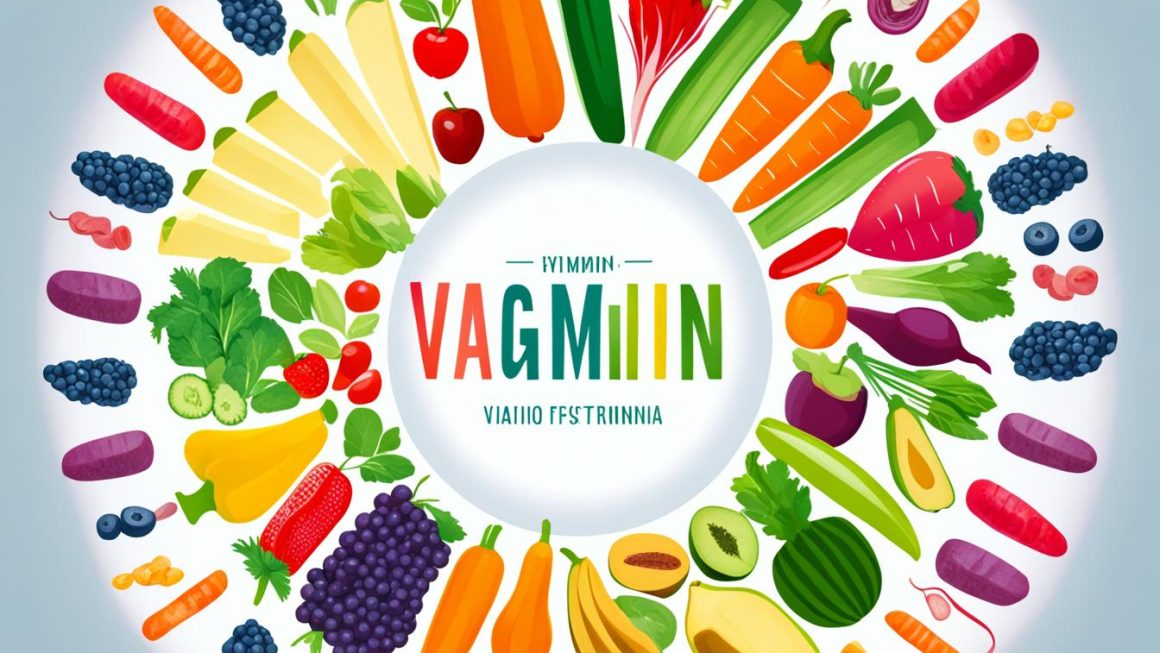Health inspections are a critical aspect of ensuring the safety and quality of food establishments. By conducting detailed examinations of the premises, staff, and products, health inspectors identify potential hazards and help maintain compliance with food safety regulations. Understanding the focus points of health inspections is essential for restaurant owners and managers to uphold high standards of hygiene and protect the health of their customers.
Key Takeaways:
- Health inspections are detailed examinations that assess the safety of food establishments.
- Health inspectors focus on identifying potentially hazardous conditions and materials.
- Compliance with health inspection guidelines and regulations is crucial for ensuring public health.
- Proper knowledge of health codes and food safety practices is necessary for restaurant staff.
- Addressing the point of focus during health inspections leads to improved safety and customer satisfaction.
What is a Health Inspection? Why Are Health Inspections Necessary?
Health inspections are crucial for ensuring the safety of food establishments and protecting the well-being of consumers and workers. These inspections involve meticulous examinations of food establishments, staff, and products to identify any unsafe or potentially hazardous conditions. By focusing on all aspects of food establishments, from storage to production and processing, health inspectors play a vital role in upholding food safety regulations.
During a health inspection, inspectors thoroughly assess various areas of a food establishment, including:
- Food storage facilities
- Cooking and food preparation areas
- Hygiene practices of employees
- Cleaning procedures
- Sanitation methods
- Compliance with food safety regulations
Inspectors pay close attention to details to ensure that food establishments maintain the highest standards of cleanliness, hygiene, and adherence to food safety regulations. They look for potential risks that could lead to foodborne illnesses or jeopardize the overall safety of the establishment.
“A health inspection is like a thorough check-up for food establishments, assessing their compliance with food safety regulations and ensuring the protection of consumers and workers.”
Health inspections serve as a regulatory mechanism to enforce and reinforce food safety practices. By identifying and rectifying potential hazards, these inspections help prevent the occurrence and spread of foodborne illnesses. Additionally, they assist in maintaining customer trust and confidence in food establishments, contributing to a healthier society.
| Key Areas Covered in a Health Inspection |
|---|
| Food storage facilities |
| Hygiene practices of employees |
| Cooking and food preparation areas |
| Cleaning procedures |
| Sanitation methods |
| Compliance with food safety regulations |
Health inspections play a vital role in ensuring the safety and well-being of consumers, workers, and the overall community. By identifying potential risks and enforcing food safety regulations, these inspections contribute to a healthier and safer dining experience for everyone.
What Do Health Inspectors Look for In a Restaurant?
During a health inspection, health inspectors rigorously assess food establishments to ensure compliance with food safety procedures. Their objective is to prevent contamination, bacteria growth, and foodborne illnesses, safeguarding the health and wellbeing of customers.
Inspectors focus on various key areas when evaluating the safety and cleanliness of a restaurant:
- Food Storage: Inspectors examine how restaurants store and handle food products, ensuring proper refrigeration and prevention of cross-contamination.
- Thawing Procedures: Proper thawing methods are crucial to prevent bacterial growth. Health inspectors ensure that restaurants follow the correct thawing procedures for frozen food products.
- Cooking Practices: Inspectors assess the cooking practices employed by restaurants to verify that all food products are cooked at safe temperatures to eliminate harmful bacteria.
- Kitchen Cleanliness: The cleanliness of the kitchen, including surfaces, utensils, and equipment, is carefully assessed to ensure proper sanitation practices and prevent contamination.
- Storage Areas: Inspectors inspect storage areas, such as pantries and dry goods storage, to ensure cleanliness and proper organization.
- Freezers: Proper maintenance of freezers is necessary to prevent the growth of bacteria. Health inspectors check freezer temperatures and cleanliness.
It is essential for restaurants to prioritize these areas to maintain high food safety standards. Non-compliance can result in severe consequences, such as foodborne illnesses and legal ramifications.
“Health inspectors play a vital role in protecting public health by ensuring that food establishments follow strict guidelines for food safety and sanitation.”
To provide a visual understanding, refer to the table below that summarizes the specific areas health inspectors focus on during a restaurant inspection:
| Point of Focus | Description |
|---|---|
| Food Storage | Verify proper food storage and prevention of cross-contamination. |
| Thawing Procedures | Evaluate correct methods for the safe thawing of frozen food products. |
| Cooking Practices | Assess proper cooking temperatures and practices to eliminate harmful bacteria. |
| Kitchen Cleanliness | Inspect overall kitchen cleanliness, including surfaces, utensils, and equipment. |
| Storage Areas | Check the cleanliness and organization of pantries and dry goods storage. |
| Freezers | Verify proper freezer temperatures and cleanliness to prevent bacteria growth. |
Note: The table is for illustrative purposes only and does not represent actual inspection criteria.
Food establishments must adhere to these food safety procedures to pass health inspections and ensure the health and safety of their customers.
What Is the Point of Focus During Health Inspections?
The point of focus during health inspections is on potentially hazardous foods that require precise time and temperature maintenance. Inspectors prioritize the safety of these foods to prevent foodborne illnesses and protect public health. They also ensure that management staff and employees are well-educated and knowledgeable about health codes, food safety practices, and safe food handling and preparation.
Inspectors carefully examine various aspects related to potentially hazardous foods, including:
- Temperature control: Confirming that foods are stored, cooked, and held at safe temperatures to prevent bacterial growth and contamination.
- Cross-contamination prevention: Evaluating practices that minimize the risk of cross-contamination between raw and cooked foods, such as using separate cutting boards and utensils for different food types.
- Proper labeling and storage: Verifying that potentially hazardous foods are properly labeled, dated, and stored, minimizing the chances of spoilage or mishandling.
- Safe food preparation techniques: Ensuring that proper food handling practices are followed, including thorough handwashing, use of gloves, and appropriate use of cleaning and sanitizing agents.
By focusing on these critical areas, health inspectors strive to maintain the highest standards of food safety and protect consumers from the risks associated with improper handling, storage, and preparation of potentially hazardous foods.
| Point of Focus | Key Areas |
|---|---|
| Potentially Hazardous Foods |
– Temperature control – Cross-contamination prevention – Proper labeling and storage – Safe food preparation techniques |
Note: The table above summarizes the key areas of focus during health inspections regarding potentially hazardous foods.
Drainage as a Point of Focus During Health Inspection Visits
During health inspections, proper drainage is a critical point of focus to ensure the safety and cleanliness of your food establishment. Effective drainage plays a significant role in preventing contamination and maintaining high standards of hygiene. Health inspectors thoroughly examine the drainage systems, particularly floor drains, to ensure they are clean, free from debris, and functioning properly.
FoodSafe Drains, a trusted provider of drainage solutions specifically designed for the food industry, can help you meet the stringent requirements of health inspections. Their innovative products offer effective drainage while adhering to food safety regulations. With FoodSafe Drains, you can ensure that your establishment maintains a safe and contamination-free environment.
Inspectors understand the importance of proper drainage in minimizing the risk of contamination and the spread of foodborne illnesses. By addressing drainage issues and investing in reliable drainage solutions, you not only pass health inspections but also safeguard the health and well-being of your customers and staff.
FoodSafe Drains: Ensuring a Passing Health Inspection
When it comes to maintaining a safe and hygienic food establishment, proper drainage is of utmost importance. That’s where FoodSafe Drains steps in. With their innovative drainage solutions designed specifically for the food industry, you can ensure a passing health inspection and a clean environment for your staff and customers.
FoodSafe Drains offers a range of drainage products that not only provide effective drainage but also meet the highest safety standards. Two of their standout solutions are the FoodSafe Trench Drain and FoodSafe Slot Drain.
The FoodSafe Trench Drain
“The FoodSafe Trench Drain is an essential addition to any food establishment, offering superior drainage performance. It features a durable and corrosion-resistant design, making it perfect for kitchens, prep areas, and food processing facilities. With its self-cleaning feature and hygienic design, maintenance is a breeze.”
The FoodSafe Slot Drain
“The FoodSafe Slot Drain is another excellent choice for maintaining a safe and clean kitchen environment. Its slim profile makes it ideal for areas with limited space, and its seamless construction eliminates any crevices where bacteria and debris can accumulate. Cleaning is quick and easy, ensuring optimal hygiene.”
Both the FoodSafe Trench Drain and FoodSafe Slot Drain are designed with the highest standards of food safety in mind. They not only facilitate proper drainage but also promote a hygienic workspace, reducing the risk of contamination and ensuring compliance with health inspection guidelines.
But it doesn’t stop there. FoodSafe Drains understands the importance of ease of use and maintenance. Their drainage systems are engineered to be easy to clean and maintain, ensuring that your food establishment is always ready for a health inspection. With their innovative designs and superior functionality, FoodSafe Drains is your go-to solution for ensuring a clean and safe environment in your kitchen.
Benefits of Using FoodSafe Drains
By choosing FoodSafe Drains for your drainage needs, you can enjoy a range of benefits:
- Superior drainage performance
- Compliance with health inspection guidelines
- Hygienic design to prevent bacteria growth
- Durable and corrosion-resistant materials
- Easy to clean and maintain
With FoodSafe Drains, you can have peace of mind knowing that your food establishment is equipped with top-of-the-line drainage solutions that prioritize safety and cleanliness.
| FoodSafe Drains | FoodSafe Trench Drain | FoodSafe Slot Drain |
|---|---|---|
| Benefits | – Superior drainage performance | – Slim profile for limited space |
| – Durable and corrosion-resistant | – Seamless construction to prevent bacteria accumulation | |
| – Easy to clean and maintain |
Critical Items in Health Inspections
Critical items in health inspections are of utmost importance as they directly relate to preventing foodborne illnesses and safeguarding public health. Failure to address these critical items can lead to severe consequences and potential harm to consumers. As a food establishment, it is crucial to prioritize the following critical items during health inspections:
- Proper Handwashing: Ensuring that all staff members consistently follow proper handwashing techniques is essential for preventing the spread of harmful bacteria and viruses. This includes using warm water, soap, and scrubbing hands for at least 20 seconds before and after handling food, using the restroom, or engaging in other activities that may contaminate hands.
- Food from Approved Sources: It is vital to source food from trusted and approved suppliers to minimize the risk of contamination. Inspectors will verify that your establishment only uses ingredients and products from reliable sources with proper certifications and adherence to safety standards.
- Correct Sanitizer Concentration in Dishwashers: Dishwashers play a crucial role in maintaining cleanliness and preventing the spread of harmful pathogens. Inspectors ensure that the sanitizer used in your dishwasher has the correct concentration, as specified by health regulations, to effectively kill bacteria and ensure the cleanliness of utensils, dishes, and equipment.
- Prevention of Cross-Contamination: Cross-contamination, where harmful bacteria from one food item spreads to another, can lead to foodborne illnesses. Health inspectors pay close attention to the prevention of cross-contamination by examining proper storage, separation of raw and cooked food, use of color-coded cutting boards and utensils, and strategies to avoid contact between different food items.
By prioritizing these critical items and implementing robust practices to address them, your food establishment can significantly reduce the risk of foodborne illnesses and create a safe environment for customers and staff. Meeting these requirements not only ensures compliance with health regulations but also promotes public trust and confidence in the safety of your establishment.

Non-Critical Items in Health Inspections
While health inspections mainly focus on identifying potential hazards that can contribute to foodborne illnesses, non-critical items are still crucial for maintaining a safe and clean food establishment. Neglecting these items can lead to serious problems that may compromise the overall hygiene and safety of the premises.
Examples of Non-Critical Items
Here are some non-critical items that health inspectors pay attention to during inspections:
- Labeled Food Storage Containers: Properly labeled containers help prevent confusion and ensure the correct storage and usage of food products.
- Current Operator Permit: It is essential for all food establishments to have a valid operator permit, demonstrating compliance with health regulations.
- Properly Calibrated Meat Thermometers: Accurate temperature measurement is critical for food safety. Meat thermometers should be regularly calibrated to ensure precise readings and prevent undercooking or overcooking.
- Cleanliness of Floors, Walls, and Ceilings: Maintaining clean and sanitary surfaces helps prevent the accumulation of dirt, pests, and potential sources of contamination.
Although non-critical items may not pose an immediate risk to public health, addressing them is essential for maintaining a high standard of cleanliness and safety in food establishments. Neglecting these items can create an environment that fosters the growth of harmful microorganisms and compromises overall food safety.
Note: Maintaining cleanliness in non-critical areas, such as floors, walls, and ceilings, is important for overall food safety.
Point of Focus: Potentially Hazardous Foods
During health inspections, one of the key areas of scrutiny is the handling and maintenance of potentially hazardous foods. These foods require precise time and temperature control to prevent the growth of harmful bacteria and the occurrence of food-related illnesses. Health inspectors pay close attention to the cooking, holding, and storage temperatures of various food categories, including meat, poultry, seafood, and ready-made food products.
Temperature Control: A Critical Aspect
Temperature control is crucial when it comes to potentially hazardous foods. Improper temperatures can lead to bacterial growth, which can result in food poisoning and other health risks for consumers. Health inspectors ensure that establishments follow proper cooking and holding temperatures to eliminate any potential dangers.
Here are some examples of the temperature requirements for different potentially hazardous foods:
| Food Category | Cooking Temperature | Holding Temperature | Storage Temperature |
|---|---|---|---|
| Meat (ground or whole) | 160°F (71°C) | ≥ 140°F (60°C) | ≤ 41°F (5°C) |
| Poultry | 165°F (74°C) | ≥ 140°F (60°C) | ≤ 41°F (5°C) |
| Seafood | 145°F (63°C) | ≥ 140°F (60°C) | ≤ 41°F (5°C) |
| Ready-made Food Products | Recommended cooking temperature for each specific product | ≥ 140°F (60°C) | ≤ 41°F (5°C) |
It is essential for food establishments to adhere to these temperature guidelines to ensure the safety and quality of the food they serve to customers. By maintaining proper temperature control, establishments can minimize the risk of foodborne illnesses and create a safe dining experience.
Manager and Staff Knowledge
As a restaurant owner or manager, it is crucial to have a strong understanding of local health codes and regulations. This knowledge ensures that your establishment operates in compliance with food safety practices, protecting both your customers and your business. Health inspectors will test your knowledge during inspections to ensure that you are upholding the necessary standards.
Health codes:
Understanding the health codes specific to your area is essential. These codes outline the requirements and guidelines for maintaining a safe and hygienic food establishment. Familiarize yourself with these regulations and ensure that all staff members are trained accordingly.
Food safety practices:
Safe food handling and preparation are key components of maintaining a healthy environment. Train your employees on proper food safety practices, including hygiene, cross-contamination prevention, and temperature control. Regularly reinforce these practices to ensure they become second nature in your establishment.
By prioritizing manager and staff knowledge, you set the foundation for a safe and compliant operation. Not only does this protect your customers from potential health risks, but it also builds trust and credibility in your brand.
Importance of Manager and Staff Knowledge
Having a well-informed management team and knowledgeable staff members is essential for several reasons:
- Compliance with health codes: When you and your staff have a thorough understanding of health codes, you can proactively implement the necessary protocols to ensure compliance. This reduces the risk of violations, penalties, and even business closures.
- Prevention of foodborne illnesses: Properly trained employees are equipped with the knowledge to handle and prepare food safely, reducing the potential for foodborne illnesses. This protects both your customers and your reputation.
- Efficient operations: When all staff members are trained in food safety practices, they can work together cohesively to maintain a hygienic environment. This leads to smoother operations, reduced waste, and increased productivity.
- Customer satisfaction: Knowing that your staff is knowledgeable about food safety instills confidence in your customers. They can enjoy their dining experience without worrying about potential health risks.
Investing in the knowledge and education of your management team and staff members is a proactive approach to ensuring the long-term success of your food establishment. By prioritizing health codes and food safety practices, you create a culture of excellence that promotes the well-being of both your customers and your business.

| Benefits of Manager and Staff Knowledge | Best Practices |
|---|---|
|
|
Employee Health
When it comes to food safety and preventing foodborne illnesses, employee health plays a critical role. Sick employees should never handle or prepare food, as they can pose a risk of contamination and the spread of diseases. Health inspectors understand the significance of employee health and prioritize its inspection during their visits. They may inquire about sick leave policies and the measures implemented by establishments to prevent person-to-person contact.
Ensuring that all employees are in good health is vital for maintaining a safe and hygienic environment in food establishments. By following proper employee health practices, establishments can significantly reduce the risk of foodborne illnesses and protect both their customers and reputation.
Note: The image above highlights the importance of employee health in maintaining food safety standards.
| Importance of Employee Health | Actions to Ensure Employee Health |
|---|---|
| Prevents food contamination | Implement strict policies on sick employees |
| Reduces the spread of foodborne illnesses | Provide proper training on personal hygiene |
| Maintains customer trust and satisfaction | Encourage employees to report illness symptoms |
| Complies with health and safety regulations | Ensure easy access to handwashing facilities |
Table: The importance of employee health and actions to ensure employee health in food establishments.
Benefits of Addressing Point of Focus in Health Inspections
Addressing the point of focus during health inspections offers numerous benefits that contribute to overall public health and safety, customer satisfaction, and legal compliance. By prioritizing the areas of concern identified by health inspectors, establishments can ensure the highest standards of hygiene and food safety, protecting both their patrons and their reputation.
Here are the key benefits of addressing the point of focus in health inspections:
1. Improved Public Health and Safety
By addressing the specific areas of concern identified during health inspections, food establishments can mitigate potential risks and implement corrective measures. This proactive approach reduces the likelihood of food contamination, foodborne illnesses, and other health hazards, leading to improved public health and safety in the community.
2. Enhanced Customer Satisfaction
Customers place a high value on the cleanliness and safety of the establishments they frequent. By demonstrating a commitment to addressing the point of focus during health inspections, food establishments can instill confidence in their customers. This leads to enhanced customer satisfaction, repeat business, and positive word-of-mouth recommendations.
3. Legal and Regulatory Compliance
Food establishments must adhere to strict health codes and regulations to ensure compliance with local, state, and federal requirements. By addressing the point of focus during health inspections, establishments demonstrate their commitment to upholding these standards, avoiding potential legal issues, fines, or even business closures.
4. Prevention of Foodborne Illnesses
Addressing the specific concerns identified during health inspections plays a critical role in preventing foodborne illnesses. Whether it is maintaining proper temperature control, preventing cross-contamination, or ensuring adequate sanitation practices, focusing on the point of concern helps minimize the risk of foodborne illnesses and protects the health of consumers.
5. Establishment of Trust
Consistently addressing the point of focus during health inspections builds trust and credibility among customers, employees, and regulatory authorities. It demonstrates a commitment to maintaining high standards of food safety and hygiene, establishing the reputation of the establishment as a reliable and trustworthy place to dine or purchase food.
By recognizing the importance of addressing the specific point of focus during health inspections, food establishments can reap the benefits of improved public health and safety, customer satisfaction, and regulatory compliance. Prioritizing these areas helps prevent the spread of foodborne illnesses, instills customer trust, and ensures that establishments meet the required health and safety standards.
Best Practices for Point of Focus in Health Inspections
When it comes to health inspections, implementing best practices is crucial for addressing the point of focus and ensuring a safe and healthy environment in your food establishment. These practices involve regular training and education, establishment of standard operating procedures, and the use of advanced technology for inspections and data analysis.
Regular training and education help to keep your staff up-to-date with the latest food safety regulations and best practices. By investing in continuous training, you equip your team with the knowledge and skills necessary to handle food properly, maintain cleanliness, and prevent foodborne illnesses.
Establishing standard operating procedures (SOPs) is another important aspect of best practices in health inspections. SOPs outline step-by-step instructions for various food safety procedures, such as cleaning and sanitizing, proper food handling and storage, and temperature control. By following SOPs consistently, you can maintain consistent standards and reduce the risk of violations during health inspections.
The use of advanced technology can greatly enhance the effectiveness of health inspections. Digital tools and software can streamline inspection processes, automate data collection, and facilitate analysis. For example, digital temperature monitoring systems can provide real-time temperature data, ensuring that potentially hazardous foods are stored and cooked at the correct temperatures. Additionally, inspection management software can help you track and address any areas of improvement identified during health inspections.
“By implementing these best practices, you demonstrate a commitment to food safety and create a culture of excellence in your food establishment.”
By implementing these best practices, you demonstrate a commitment to food safety and create a culture of excellence in your food establishment. Not only will this help you pass health inspections with flying colors, but it will also protect the health and well-being of your customers and employees.
| Best Practices for Point of Focus in Health Inspections |
|---|
| Regular training and education |
| Establishment of standard operating procedures |
| Use of advanced technology for inspections and data analysis |
Conclusion
Health inspections play a vital role in maintaining high hygiene standards, preventing foodborne illnesses, and promoting public health. The point of focus during these inspections is critical, as it allows establishments to identify and address potential health and safety risks. By understanding and following best practices, establishments can ensure compliance with regulations, protect public health, and enhance customer satisfaction.
Addressing the point of focus requires a thorough examination of potentially hazardous foods, proper drainage systems, employee health, and overall knowledge of health codes and food safety practices. In doing so, establishments can mitigate the risk of contamination and bacterial growth that can lead to severe health issues.
Implementing best practices, such as regular training and education, establishing standard operating procedures, and utilizing advanced technology for inspections, can further enhance safety and create a healthy environment. By prioritizing public health and adhering to regulations, establishments can safeguard their reputation, avoid legal and regulatory issues, and ensure the well-being of their customers.



